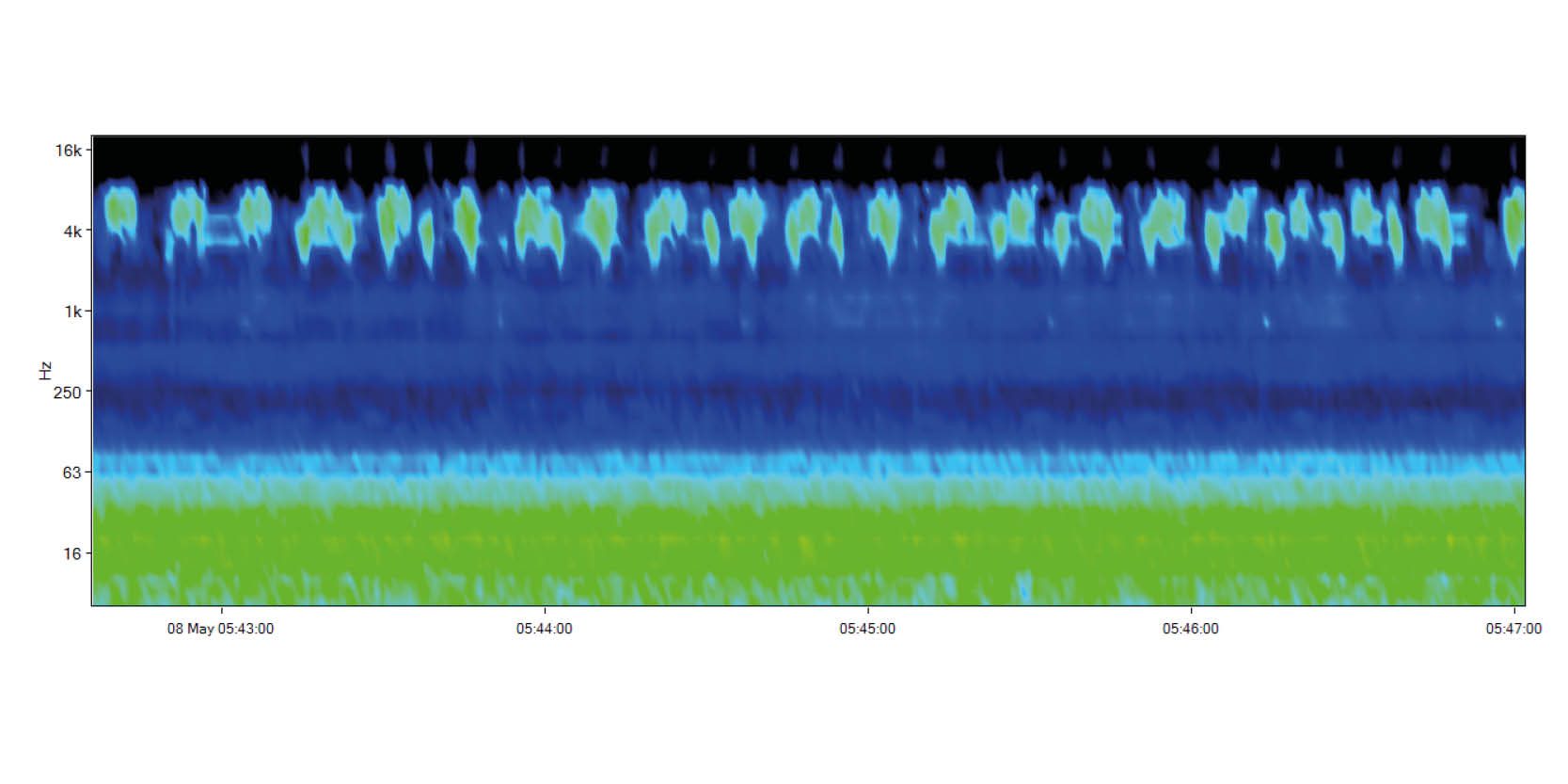During the recent fine weather, our acoustics team has been out in the field, undertaking compliance surveys for our clients and baseline surveys for impact assessment projects. The impact of the dawn chorus is always very pronounced at this time of year. At present, the chorus kicks off at 04:55 am. Birdsong activity intensifies over the following few minutes, and by 05:10 am, the chorus is in full flight. The chief contributors are small song birds, with the species mix being dependent on location. Some birds are surprisingly loud for their size. The wren is a good example; it is considerably smaller than a microphone windscreen, but can be picked up by the microphone over 50 m away.
We see the dawn chorus onset time start earlier and earlier as mid-June approaches, by which time it will kick off at around 04:30 am. After around an hour, the chorus typically eases off slightly, and gradually eases further over the following hours. Birdsong continues throughout the day, however, so the chorus doesn’t disappear until dusk. At many sites, a rapid fall-off in birdsong is evident over ten minutes. At present, this occurs at around 10:00 pm.
Many noise surveys have been compromised by vigorously singing birds. While birdsong is a beautiful and welcome feature in the soundscape, the dawn chorus can have a big impact on nighttime noise levels. Night-time is typically defined as 11:00 pm – 07:00 am. A baseline noise survey undertaken for a project will usually involve measurement through the night until 07:00 am. This data will be used to assess impacts associated with the proposed development. By comparing predicted levels from the development with baseline noise levels, the degree of impact can be assessed. To make this assessment as rigorous as possible, we will typically take baseline noise levels from the quieter parts of the night. It is good practice to remove the dawn chorus from the night-time data. This is recommended by some standards, although several documents do not refer to the dawn chorus.
Our noise equipment detects powerful energy at high frequencies during the dawn chorus. Energy is evident between 2000 and 8000 Hz. This range is quite different to the range produced by anthropogenic sources such as traffic and machinery, and therefore birdsong is readily identifiable in the recorded noise data. The figure below shows a sample recorded around 05:45 am on the 8th May 2025. Several nearby birds were singing to their hearts’ content, with repeated phrases. These are visible as repeating green bursts along the top of the image, between 2500 and 8000 Hz. We will consult with our Ornithologists to figure out what species they were.



